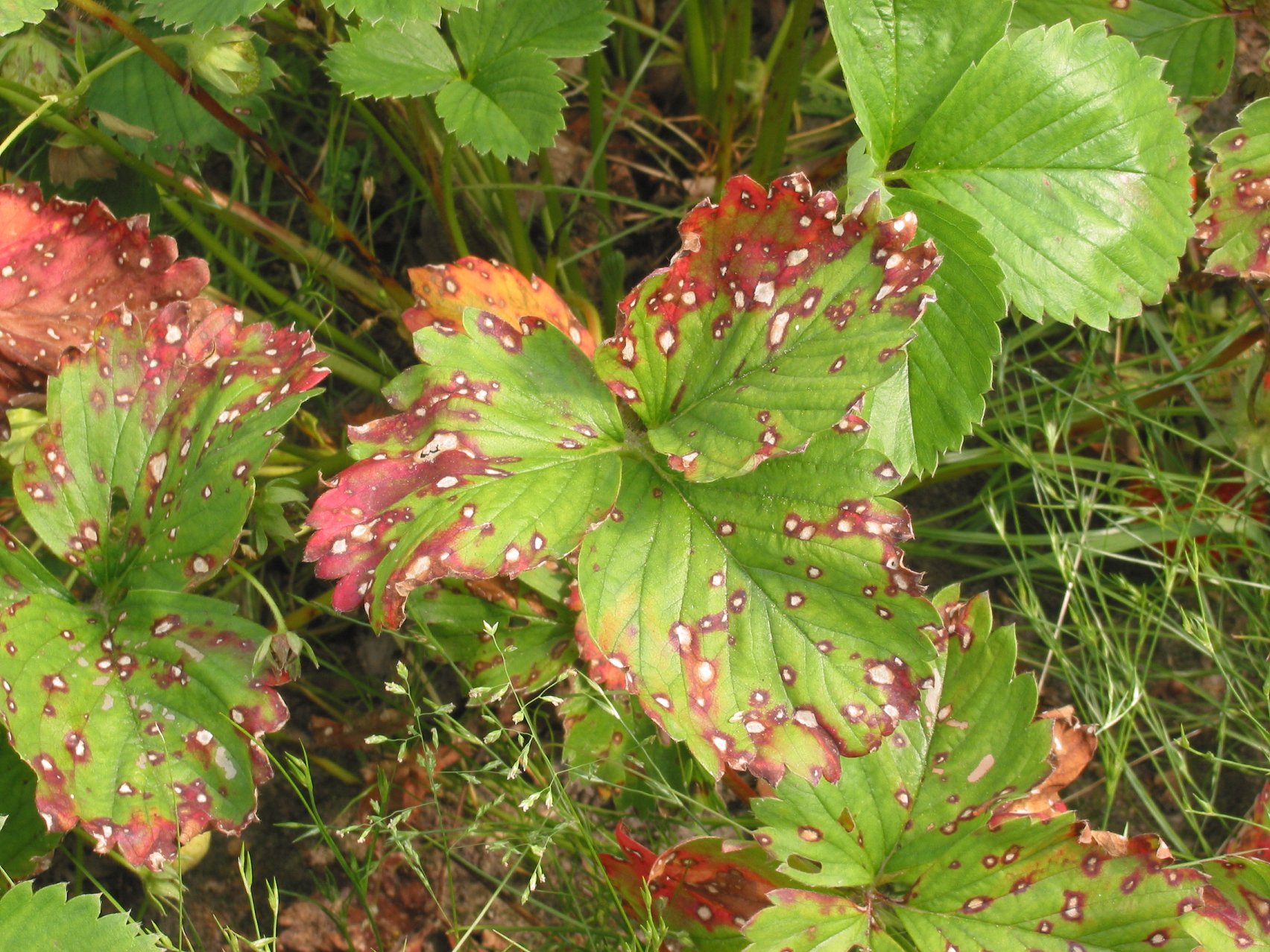
Leaf scorch
Diplocarpon earlianum
What is leaf scorch (Diplocarpon earlianum)?
Diplocarpon earlianum is a fungal pathogen that causes leaf scorch. It is primarily found in temperate, subtropical, and tropical regions with warm temperatures and heavy rainfall. The disease infects plants, affecting leaves, petioles, fruits, and stems. Early symptoms resemble common leaf spot, but centers do not turn tan or white, in addition, small purplish to brownish lesions on leaves, which darken and enlarge over time. Furthermore, Leaves may turn brown and dry up, resembling a scorched appearance. Petioles can develop purple, sunken lesions. Infected fruits exhibit unattractive blemishes. The disease weakens plants, reducing their ability to tolerate stress and winter damage.
How does the leaf scorch (Diplocarpon earlianum) occur?
Diplocarpon earlianum reproduces through both asexual and sexual methods. It overwinters in infected leaves, forming survival structures called acervuli. In spring, it produces asexual spores called conidia, which are spread by water. The conidia penetrate the plant cuticle and establish infection. The fungus also produces sexual spores called ascospores in cup-shaped structures called apothecia. Ascospores are released in favorable conditions. This cycle allows for multiple infections, aiding the pathogen's spread and survival.
Symptoms
1 - Effects on Plants
• Weakening of plants: Diplocarpon earlianum causes leaf scorch, which weakens the affected plants. • Reduced Tolerance: Infected plants may have reduced tolerance to stress factors such as drought and winter damage. • Reduced yield and quality: The disease can impact fruit quality and yield in crops. Infected fruits may develop unattractive blemishes, leading to decreased market value.
Solutions
1 - Cultural Control
• Practice proper garden sanitation by removing infected plant debris and burning it. • Plant resistant and disease-free seeds or transplants. • Rotate crops with non-host plants to reduce pathogen buildup in the soil. • Manage irrigation to avoid prolonged leaf wetness. • Remove and destroy affected plant parts to reduce the spread of the disease. • Provide adequate spacing between plants to promote airflow and reduce humidity, creating an unfavorable environment for the fungus.
2 - Chemical Control
• Apply fungicides labeled for Diplocarpon earlianum if necessary. Various fungicides, with active ingredients such as thiophanate-methyl, myclobutanil, and azoxystrobin, are available for the control of Fungal pathogens like Diplocarpon earliana. • Always read and follow the instructions on the fungicide label for proper application rates and timing. Consult local agricultural experts for specific fungicide recommendations in your region.
